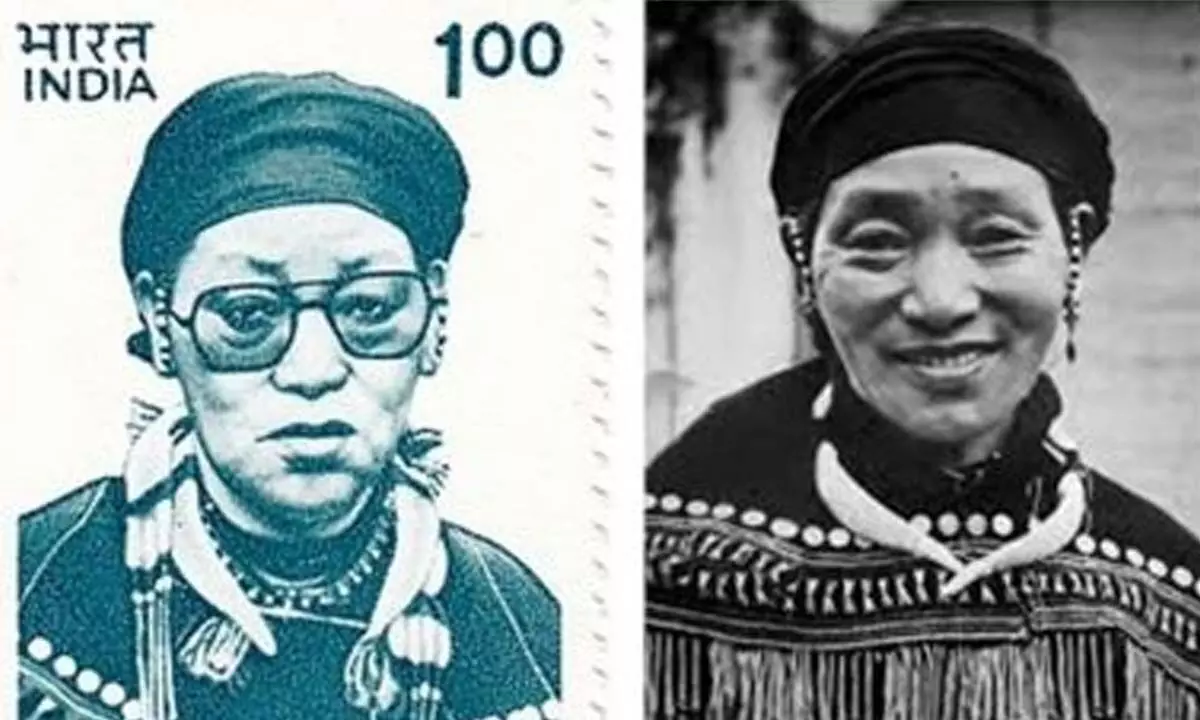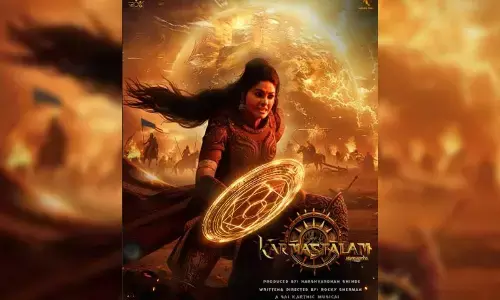A Gandhian among the Nagas

A Gandhian among the Nagas
Gaidinliu Pamei (January 26, 1915-February 17, 1993) belonged to the Rongmei Naga tribe that was part of the larger Zeliangrong Naga community that lived in settlements across present- day Manipur, Nagaland and Assam.
Gaidinliu Pamei (January 26, 1915-February 17, 1993) belonged to the Rongmei Naga tribe that was part of the larger Zeliangrong Naga community that lived in settlements across present- day Manipur, Nagaland and Assam.
She was just 13 when she joined the Heraka religious movement of her cousin Haipou Jadonang, who tried to standardize traditional Naga beliefs at a time when Christianity and Vaishnavism were making inroads into Naga territory. The movement later morphed into a revolt against British rule in India largely based on Gandhian concepts.
"Jadonang, who claimed to have received spiritual guidance from his days spent meditating in isolation in the Bhuban cave (now in Assam), took on the responsibility to lead his people. Gaidinliu supported him in this endeavour. The resistance tactics employed by them included both hit-and-run tactics on British army camps, as well as acts of passive resistance, such as refusing to pay taxes, or a part of the produce to British authorities," author Anu Kumar writes in 'Her Name Was Freedom: 35 Fearless Women Who Fought For India's Independence'.
"The non-cooperation resistance advocated by Jadonang echoed Gandhi's message. Jadonang had come to know of Gandhi during his own visits to Cachar (in the Barak Valley region of Silchar, Assam) and had even composed a song in Gandhi's honour. A plan for them to meet fell through when Gandhi's visit to the region was abruptly halted by the British police," Kumar writes.
Jadonang, however, was falsely accused of killing four Maitei traders and was hanged by the British by an almost kangaroo-court style trial after which the Zeliangrong regrouped under the leadership of Gaidinliu.
"Days after becoming the movement's leader, Gaidinliu insisted on continuing the anti-British struggle in the same way as before. She issued similar calls - urging people not to pay taxes and striking against the British outposts with her small guerrilla fighting units.
"At the same time, like Jadonang, Gaidinliu too sought inspiration from Gandhi, whose appeal had by this time spread across India. She used his name in messages to her people and soldiers, trying to introduce them to Gandhian ways of Civil Disobedience. She also popularised the song that Jadonang had written in praise of Gandhi," the book states.
The British authorities launched a manhunt for her. She evaded arrest by the police, moving across villages in what are now Assam, Nagaland and Manipur as the Governor of Assam dispatched two battalions of the Assam Rifles against her. Monetary rewards were declared for information leading to her arrest, including a 10-year tax break for information on her whereabouts.
Her forces engaged the Assam Rifles in the North Cachar Hills (February 16, 1932) and Hangrum village (March 18, 1932) and in October 1932, Gaidinliu moved to the Pulomi village, where her followers started building a wooden fortress. Even as the fortress was under construction, an Assam Rifles contingent launched a surprise attack on October 17 and Gaidinliu, along with her followers, was arrested and sentenced to life imprisonment.
She was 16 at the time.
Jawaharlal Nehru met her five years later in Shillong Jail and promised to pursue her release by appealing, among others, to British Member of Parliament Nancy Astor but to no avail. He also gave her the title of 'Rani' and she gained local popularity as Rani Gaidinliu.
She was released in 1947 after India's Independence and continued to work for the uplift of her people. An advocate of the ancestral Naga religious practices, she staunchly resisted the conversion of Nagas to Christianity.
Initially, she stayed at Vimrap village with her younger brother Marang till 1952, when she was finally allowed to move back to her native village of Longkao.
Gaidinliu was opposed to the insurgents of the Naga National Council (NNC), who advocated secessionism from India, instead campaigning for a separate Zeliangrong territory within the Indian Union.
The rebel Naga leaders criticized Gaidinliu's movement for integrating the Zeliangrong tribes and were also opposed to her working for the revival of the Heraka religion. The NNC leaders considered her actions an obstacle to their own movement, while the Baptist leaders deemed the Heraka revival movement anti-Christian. This prompted her to go underground in 1960.
In 1966, after an agreement with the Indian government, Gaidinliu emerged from her jungle hideout to work for the betterment of her people through peaceful, democratic and non-violent means.
She was honoured as a freedom fighter and was awarded a Tamrapatra in 1972, the Padma Bhushan in 1982 and the Vivekanand Seva Award in 1983.
In 1991, Gaidinliu returned to her birthplace Longkao, where she died on February 17, 1993, at the age of 78. The government issued a postal stamp in her honour in 1996 and a commemorative coin in 2015.
(Vishnu Makhijani can be reached at [email protected])



















